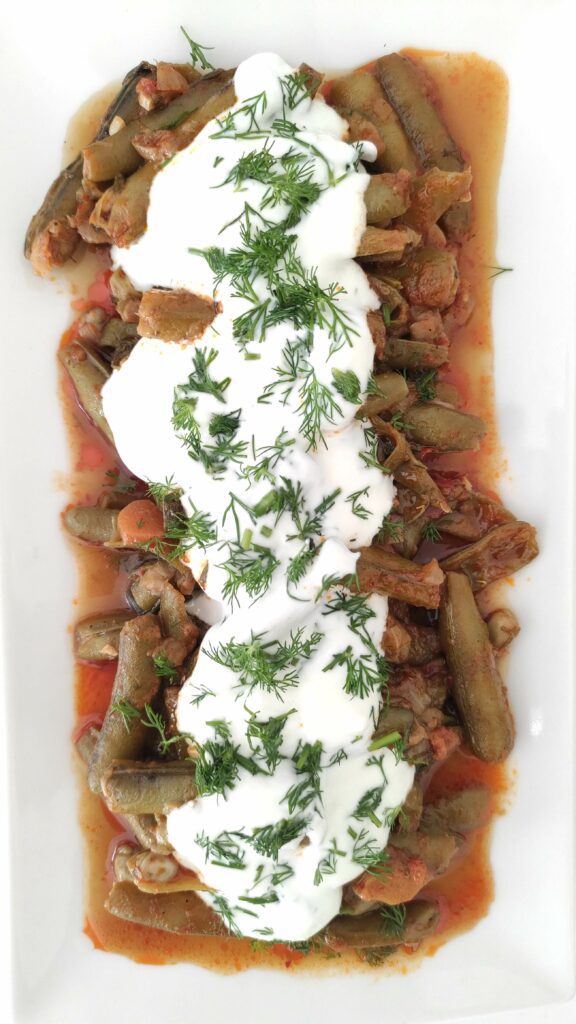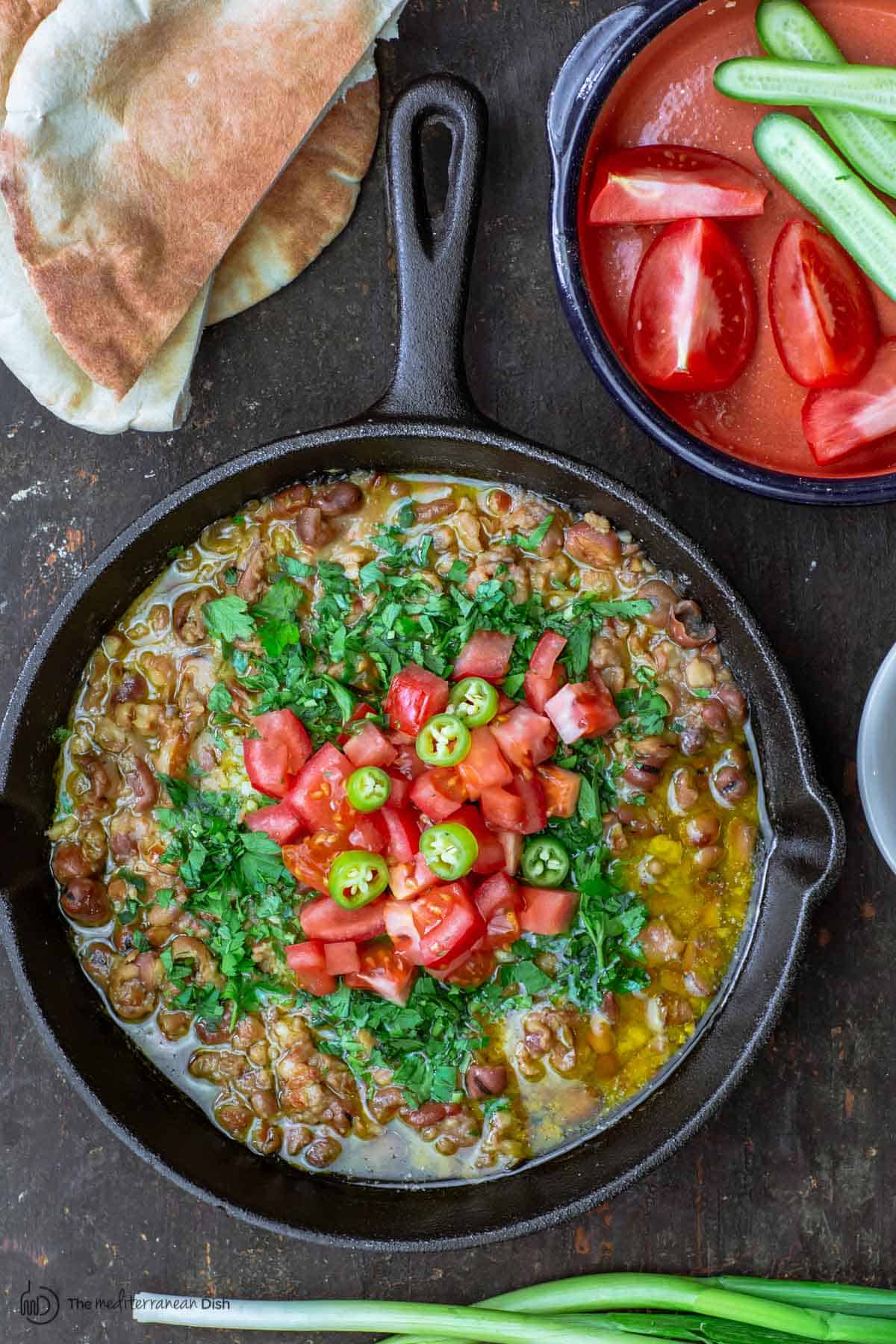The 5 Best Fava Bean Recipes

With the approaching spring months, fava beans (broad beans), a vegetable rich in vegetable protein and folate, began to take its place on the tables. Here are the 5 best fava beans recipes and health benefits of fava beans.
What are fava beans?
Fava bean is an annual plant of the legume family, cultivated as a food and fodder crop. Fava bans (broad beans) originated in the Mediterranean and south-west Asia, including Turkey. In some Asian and Mediterranean countries, such as Egypt, it is used as the main source of protein for the poor. It is widely produced in Egypt, Morocco, Spain, Italy, Turkey, Asia and China.
How to grow fava beans?
Fava beans, a plant native to a temperate climate, are primarily grown throughout the winter and eaten raw in the spring. Farmers choose it because of the little tubers that grow on the roots, which add nitrogen to the soil. It is sown alternately with summer vegetables or cereals.
Before flowering, it is also cultivated as green manure by plowing, and after harvest, it is used as animal feed. On a typically long, hollow, and angular stem, broad beans grow white blooms and compound leaves. These self-fertilizing blooms give rise to the plant’s fruits, known as pods or podlets. Each pod, also known as a “pod pod” or a “inner pod,” contains 8–10 seeds.
How to peel fava beans?
- You can consume broad beans in two different structures, fresh and dry. Both are very tasty and useful.
- If you want to clean fresh broad beans, firstly, lemon water should be prepared in a deep bowl.
- Cut the sharp parts at both ends of the fresh broad beans in your hand and separate them as rubbish.
- Cut the pods with the ends removed to the desired length and put them into the lemon water.
- The lemon water prevents the fresh broad beans from darkening during the process.
In addition, the broad beans waiting in the lemon water both remain alive and the dust on it flows. - Remove the chopped broad beans from the lemon water and rinse them under cold water.
- Washed and chopped fresh broad beans can be used for cooking.
- If you want to use only the inside of the fresh broad beans, clean the bones on the sides of the pods that you cut off the ends. When the awns are cleaned, open the pod.
- Throw the green broad beans inside the pods into the water with lemon in your hand and after waiting for a while, wash and cook.
- If the fresh fava beans are fleshy and thin, the pods can be consumed. If the opposite is the case; If the shell is yellow and thin, it is recommended to take only the inside.

Why you should eat more fava beans?
- Like other beans and lentils, fava beans are incredibly dense in protein and calories. Beans have 88 calories per 100 grams. They also include plant sterols, vitamins, minerals, and antioxidants that are good for your health. In addition to acting as a bulk laxative, fava beans are a highly abundant source of dietary fiber (66% per 100 g RDA).
- Fava beans are a particularly rich source of dietary fiber (66% of the RDA for 100 g), which has the laxative effect of bulk. Dietary fiber assists in colon mucosal protection by shortening the duration of exposure to carcinogens and binding to them in the colon. Furthermore, dietary fiber has been demonstrated to lower blood cholesterol levels by lowering the reabsorption of bile acids that bind cholesterol in the colon.
- Plant sterols and isoflavones, two phytonutrients, are abundant in broad beans. In experimental animals, breast cancer has been shown to be prevented by isoflavones like genistein and daidzein. S-sitosterol in particular, a phytosterol, aids in lowering the body’s cholesterol levels.
- Fava beans contain Levo-dopamine or L-dopa, a precursor of neuro-chemicals such as dopamine, epinephrine and nor-epinephrine in the brain. In the brain, dopamine is associated with the smooth, co-ordinated functioning of body movements. Therefore, adequate consumption of fava beans in the daily diet may help prevent Parkinson’s disease and dopamine-sensitive dystonia disorders.
- Fresh broad beans are an excellent source of folate. 100 g of beans provide 423 ug or 106% folate. Together with vitamin B-12, folate is an essential component of DNA synthesis and cell division. Adequate amounts of folate around and during pregnancy may help prevent neural tube defects in the newborn baby.
- They also contain plenty of vitamin B6 (pyridoxine), thiamine (vitamin B1), riboflavin and niacin. These vitamins function as coenzymes in the cellular metabolism of carbohydrate, protein and fat.
- In addition, broad beans are one of the best sources of minerals such as iron, copper, manganese, calcium, magnesium. At 1062 mg or 23% of daily recommended levels, fava is one of the highest plant sources of potassium. Potassium electrolyte is an integral component of cells and body fluids. It helps the effect of sodium against pressure on the heart and blood pressure.
- Fresh, crunchy fava leaves or the top greens and shoots of the fava plant also find a place in the kitchen as spring seasonal delicacies for their incredible nutritional value.
What is favism?
When fava beans, also known as broad beans, are consumed, a haemolytic reaction is known as favism. All people with favism have a G6PD deficiency, however not everyone with a G6PD deficiency has favism. The G6PD genetic mutation may have an impact on chemical sensitivity, and it is known that newborns and children are more likely to develop the disorder.
Those who lack G6PD are susceptible to hemolytic anemia when exposed to oxidative stress. Exposure to infections, chemicals, medications, and particular diets all exacerbate oxidative stress. High concentrations of vicin, divicin, convicine, and isouramyl, all of which are oxidants, can be found in legumes such fava beans. As a result, due to the possibility of developing haemolytic anemia, individuals with G6PD deficiency should exercise caution when taking fava beans.
Best Fava Bean Recipes
1. Vegetarian Fava Bean Stew
The preparation is similar to runner beans stew‘s preparation. However, it tastes a bit different.
Ingredients (4 servings):
- 1 kg (2,2 lbs) fresh broad beans
- 2 finely chopped onions
- 2 peeled and chopped tomatoes
- Bunch of dill
- 3 cloves garlic, 2 for the dish, 1 for the garlic yogurt sauce
- 1 tablespoon tomato paste
- 1 tablespoon paprika paste
- 1 teaspoon salt
- 1 black pepper
- 1 chili flakes
- 100 ml olive oil
- 1-liter HOT water
Preparation
- Wash the broad beans. Cut off the ends and remove the strings from the sites.
Contents
2. Cut the tomatoes into small pieces and chop the onions

- Heat olive oil in a large pot over medium heat.
- Add the onions and sauté for 5-6 minutes until they soften.

- Add the tomatoes, tomato paste, paprika paste, chili flakes, black pepper, 2 finely chopped garlic and sauté for another 5-6 minutes.

- Add the broad beans, dill, and sauté for 5-6 minutes.

- Add boiling water, mix, close the lid and cook for 40-45 minutes over medium low heat.

Serve with garlic yogurt sauce hot or cold and enjoy

2. Ful Mudammas (Egyptian Fava Beans) Recipe
Ful, also Foul Medammas, Foul Medammes or Ful Mudammas is a simple dish made from broad beans that is common throughout the Arab world.
Ingredients
- 2 cans plain fava beans (13 to 15 ounces each can) (see notes if using dry fava beans)
- ½ cup water
- Kosher salt
- ½ to 1 teaspoon ground cumin
- 1 to 2 hot peppers, chopped (jalapenos will work here)
- 2 garlic cloves, chopped
- 1 large lemon juice of
- Extra virgin olive oil (Early Harvest)
- 1 cup chopped parsley
- 1 tomato, diced
To Serve:
- Warm pit bread
- Sliced tomatoes
- Sliced cucumbers
- Green onions
- Olives
Instructions
- The fava beans and 1/2 cup water should be placed in a cast iron skillet or saucepan. On a medium-high heat, warm.
- Cumin and kosher salt are used to season. Mash the fava beans with a fork or a potato masher.
- The hot peppers and garlic should be placed in a mortar and pestle. Smash.
- Stir in one lemon’s juice after adding it.
- Over the fava beans, pour the hot sauce with garlic and pepper.
- Pour extra virgin olive oil on liberally. If desired, garnish with chopped parsley, sliced tomatoes, and a few spicy pepper slices.
- Serve with sliced vegetables, pita bread, and olives.

3. Fresh fava bean recipe

Ingredients:
- Fresh fava beans: Buy them in their pods if you can find. They are the tastiest ones. You will remove the beans from the pod and peel their skin. 2 pounds of fava beans with pods make about 1 cup of shelled beans. Alternatively, you can use frozen fresh fava beans, which are already podded.
- Onion: The sweetness of onion matches perfectly with the sweet and earthy taste of favas.
- Olive oil: This is the ingredient that gives the Mediterranean touch to any dish. So use a generous amount of it. The taste goes really well with the nutty taste of fava beans.
- Fresh dill: The tangy taste of dill matches well with favas and adds a refreshing touch on them. You can use parsley too.
- Red pepper flakes or crushed chili: We only use them as a garnish, but they give a nice kick on the mild fava beans.
Instructions:
- Heat olive oil in a pan and sauté the onions and garlic over medium heat for about 4-5 minutes
- Add the shelled fava beans and cook them for about 5 minutes.
- Add salt, sugar, and water, and cook the beans for about 15-20 minutes.
- Cool and garnish the beans. Remove the cooked fava beans from the heat and allow them to cool slightly. Add some freshly chopped dill and stir it in well. Serve with red pepper flakes, fresh dill, and some refreshing lemon slices

4. Akhtar Nawab`s, chef/owner at Alta Calidad Brooklyn fava bean recipe
Poach fava beans in a little good butter and lemon and finish with a little peppery olive oil. At Alta Calidad, he makes a sope, like a little masa cake, and spoon the fava beans and a little aged Cotija cheese over the top.
:max_bytes(150000):strip_icc():format(webp)/HD-201310-r-fava-bean-and-cauliflower-risotto-ac3e235e342c482fb868234926ea29bd.jpg)
5. Fave bean recipe by Kevin Korman, chef, The Ozark Mill at Finley Farms
One of his favorite preparations for these delicate beans is to blanch them and toss with fresh spring peas, mint, lemon zest, olive oil, and the surprise ingredient of shaved white chocolate. He said that the flavors mesh wonderfully.
:max_bytes(150000):strip_icc():format(webp)/smashed-fava-beans-toast-with-pecorino-and-mint-FT-RECIPE0520-a1d044ca76fd4b9a82df8bbae0330fb5.jpg)
Unfortunately, these healthy and delicious fava beans are very underrated and we should definitely eat more of them.










